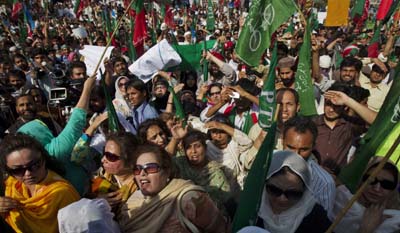Journalist security is still a maturing field, but news organizations are devoting more attention to preparing their reporters and photographers for the dangers particular to the profession. That means understanding risks that are constantly evolving. The brutal attack on CBS correspondent Lara Logan at a Cairo demonstration has drawn worldwide attention to the issue of sexual assault against journalists–CPJ issued new guidelines on the threat today–but the case also points to an emerging, if lesser-known threat. In the past 18 months, more journalists have been killed covering violent demonstrations and other non-military events than at any time since CPJ began keeping detailed records two decades ago.
“The Lara Logan case drove the point home, that we must prepare our journalists not only for the battlefield but for all of the various new threats they face when covering the news,” said Larry Rubenstein, a photojournalist who recently became Thomson Reuters’ general manager for safety and logistics for editorial. “But we’ve been seeing it for some time and are continually reviewing our training.”
For decades the overwhelming majority of all journalists killed worldwide, nearly three out four, were murdered outright. Most were local journalists murdered in direct reprisal for their work. Fewer than one in five were killed in combat. And even fewer, about one in 10, were killed covering violent demonstrations.
That seems to have changed, at least for the time being. The rise of street demonstrations and related violent clashes poses an emerging threat to journalists. So far this year, for the first time that CPJ has documented, more journalists (eight) died in violent protests than were murdered (four) or killed on the battlefield (five).
The shift began last year, when one in four work-related fatalities was related to street demonstrations. One has go to back well over a decade in CPJ’s database to find a time when a sizeable number of journalists were killed outside of murder or military combat. (The year was 1997, when five documentary filmmakers were among 17 people killed in a bomb attack in India.)
Rubenstein says Thomson Reuters is adjusting its security training and protocols to take into account a shift from battlefield hazards to civilian threats. The changes include more training in cultural skills to help journalists navigate chaotic crowds. Security professionals who train journalists say they are adjusting their curriculum to reflect the challenges.
For years, former military personnel–especially British Royal Marines who dominate firms such as Centurion and Tor International–have provided much of the security training for journalists. But today civilian experts are taking a more prominent role in preparing journalists for risks that are particular to the field, including the threat of sexual aggression on the job.
Melissa Soalt is one. “Predators will often test you first,” said Soalt, an independent self-defense expert who specializes in training women. “So women must maintain their physical space through body language, demeanor, and even tone of voice.”
Properly addressing the aftermath of a sexual assault, when trauma may set in, is very important as well. Among news organizations, there is increasing awareness of the need to provide stress and trauma management to staffers. The Associated Press has done exemplary work in developing procedures to help manage stress, according to trauma experts. “We make every effort to calibrate our response to our employees’ reactions to covering violent or difficult situations,” Santiago Lyon, AP’s director of photography, told CPJ. “We seek out leaders in the field of trauma separately to that end.”
Covering the news, of course, requires constant adjustment to ever-changing events. New organizations are learning that the security of their journalists also depends on understanding and adjusting to evolving threats.
